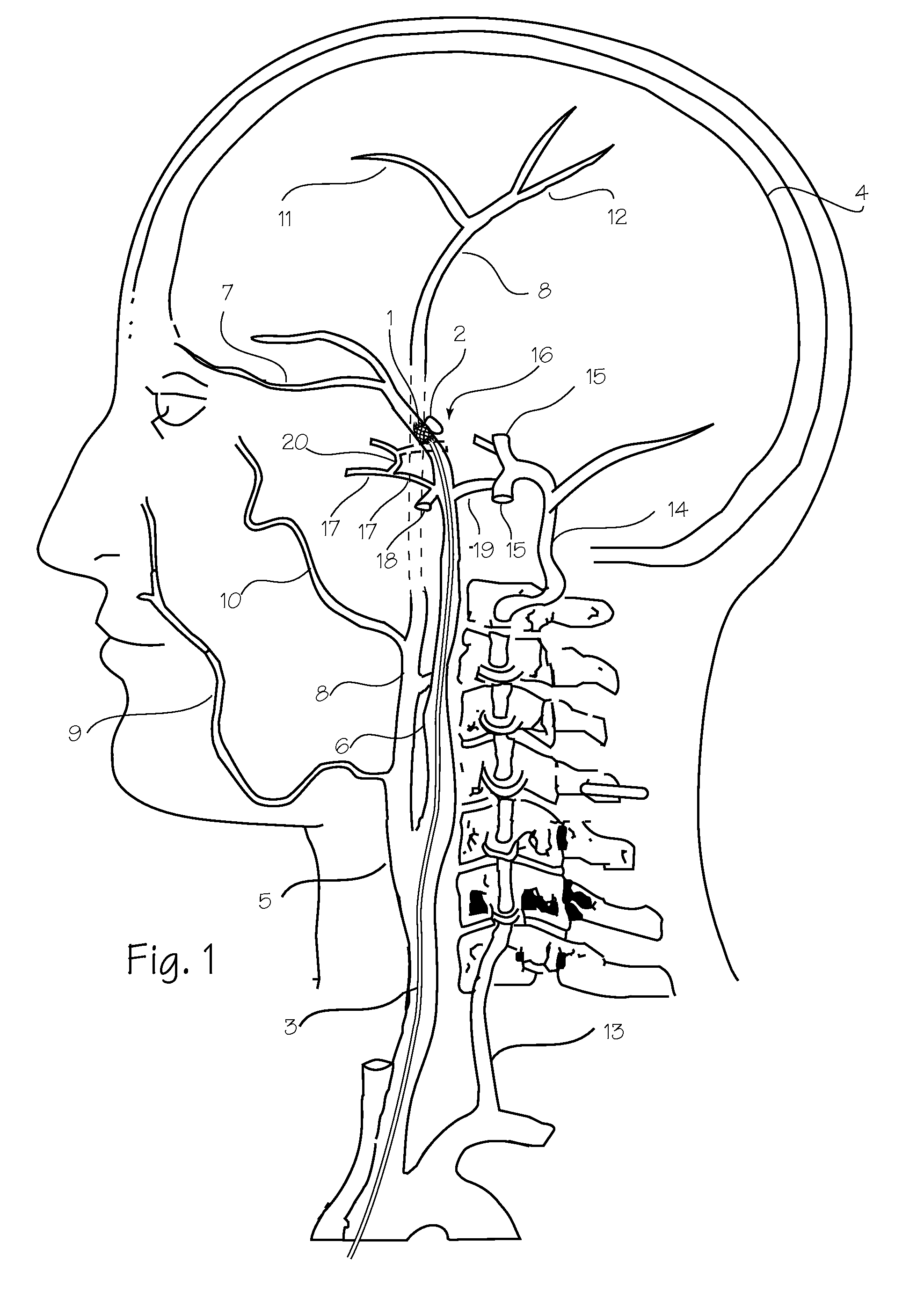Microcatheter with Modified PTFE Liner
a micro-catheter and liner technology, applied in the field of aneurysms and blood clots, can solve problems such as difficult delivery, and achieve the effects of improving toughness, reducing friction coefficient, and improving delivery speed
- Summary
- Abstract
- Description
- Claims
- Application Information
AI Technical Summary
Benefits of technology
Problems solved by technology
Method used
Image
Examples
Embodiment Construction
[0010]FIG. 1 is a schematic diagram of the vasculature of the brain showing placement of an expandable vascular reconstruction devices 1. The aneurysm treatment device is shown in an exemplary placement within the Circle of Willis. The aneurysm treatment device is delivered to this site of a vascular defect 2 via an enhanced microcatheter 3. The neuro-vasculature, which is the intended environment of use for the aneurysm treatment device, supplies the brain 4 with blood through the carotid and the vertebral arteries on each side of the neck. The important arteries the carotid artery 5 in the neck and the internal carotid artery 6 which supplies the ophthalmic artery 7. The external carotid 8 supplies the maxillary artery 9, the middle meningeal artery 10, and the superficial temporal arteries 11 (frontal) and 12 (parietal). The vertebral artery 13 supplies the basilar artery 14 and the cerebral arteries including the posterior cerebral artery 15 and the Circle of Willis indicated ge...
PUM
| Property | Measurement | Unit |
|---|---|---|
| Fraction | aaaaa | aaaaa |
| Fraction | aaaaa | aaaaa |
| Fraction | aaaaa | aaaaa |
Abstract
Description
Claims
Application Information
 Login to View More
Login to View More - R&D
- Intellectual Property
- Life Sciences
- Materials
- Tech Scout
- Unparalleled Data Quality
- Higher Quality Content
- 60% Fewer Hallucinations
Browse by: Latest US Patents, China's latest patents, Technical Efficacy Thesaurus, Application Domain, Technology Topic, Popular Technical Reports.
© 2025 PatSnap. All rights reserved.Legal|Privacy policy|Modern Slavery Act Transparency Statement|Sitemap|About US| Contact US: help@patsnap.com



